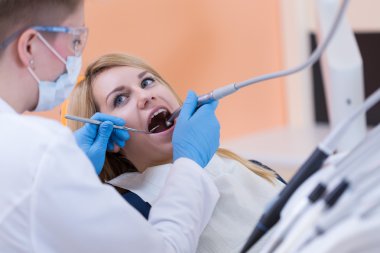
Can I Exercise After Root Canal (7 Helpful Guidelines)
Can I exercise after root canal? While it might seem like a good way to shake off the post-procedure blues, it’s crucial to understand the impact physical activity can have on your recovery. Jumping back into your fitness routine too soon could lead to complications, so here’s what you need to know before lacing up your sneakers. Getting a root canal often conjures images of post-procedure discomfort and a slow recovery period, but for those who are passionate about fitness, the pressing question looms: “Can I exercise after root canal?”
Balancing dental health with physical activity can be a tricky tightrope walk. While the thought of skipping a workout might feel like a setback to your fitness goals, understanding the intricacies of post-root canal care is crucial. Imagine bouncing back with a vigorous workout session only to realize you’ve exacerbated your condition. The key is to navigate the immediate aftermath with informed decisions, ensuring that you can return to your exercise routine without compromising your recovery. So, let’s delve into the do’s and don’ts, exploring how soon you can hit the gym, and what precautions you need to take to maintain both your oral and overall health in top form.

Can I Exercise After Root Canal
Yes, you can exercise after a root canal, but it’s important to take precautions. Most dentists recommend avoiding intense physical activity for at least 24-48 hours post-procedure. Light exercises, like walking or gentle stretching, are generally safe. Listen to your body and consult with your dentist if you’re unsure. Adequate rest helps in the healing process.
Post-Root Canal Activity Guidelines
After undergoing a root canal, many patients wonder, “Can I resume my regular workout routine?” It’s essential to give your body time to recover from the dental procedure. Strenuous activities can increase blood flow and potentially lead to bleeding or discomfort at the treatment site. Most dental professionals advise patients to avoid heavy lifting, high-impact sports, or vigorous exercise for the first couple of days.
Instead, focus on light activities such as walking, yoga, or gentle stretching, which can help maintain your fitness without putting undue strain on your healing tooth. Hydration and adequate rest are crucial during this period to support the healing process. Pay attention to any signs of pain or swelling, and do not hesitate to contact your dentist if you experience unusual symptoms.
Factors to Consider Before Exercising
Several factors determine whether you can safely exercise after a root canal. The complexity of the procedure, your overall health, and the advice of your dentist all play significant roles. If you had complications during the root canal or if your dentist needed to perform extensive work, you might need a longer recovery period. Patients with underlying health conditions should also take extra precautions. Always follow personalized advice from your healthcare provider and consider starting with low-intensity activities before gradually increasing your exercise intensity.
Listening to Your Body
Your body will signal if it’s ready for physical activity post-root canal. Common sensations include mild soreness or discomfort, which are normal and should diminish within a few days. However, if you experience sharp pain, significant swelling, or any signs of infection, it’s crucial to rest and seek medical advice. Balancing rest with light physical activity can enhance circulation and aid in the healing process, but overexertion should be avoided.
Benefits of Gentle Exercise
Engaging in gentle exercise after a root canal can offer several benefits. It helps reduce stress, promotes better sleep, and maintains a positive mindset, all of which are beneficial for recovery. Activities like walking or light yoga not only keep you active but also help improve circulation, which can speed up the healing process. Always ensure you stay hydrated and avoid any movements that may jostle or put pressure on the affected area.
Understanding Root Canal Treatment
The Procedure Explained
Steps Involved in a Root Canal
A root canal treatment involves several precise steps. Initially, the dentist performs an X-ray to assess the extent of tooth damage. Next, local anesthesia is administered to numb the area. The dentist then creates an access hole in the tooth to reach the infected pulp. Using small files, the infected pulp and nerve tissue are removed. The canals are meticulously cleaned, shaped, and disinfected. Finally, the tooth is sealed with a temporary or permanent filling to prevent future infection. This process is crucial for saving the tooth and alleviating pain.
Typical Duration and Complexity
The duration of a root canal varies based on the tooth’s condition and complexity. Typically, it takes about 60 to 90 minutes per visit. Molars, with their multiple canals, may require more time and possibly multiple appointments. The complexity of the procedure depends on factors like the tooth’s location, the degree of infection, and the presence of previous dental work. Despite its complexity, a root canal is a routine procedure that significantly reduces pain and preserves the natural tooth.
Post-Procedure Expectations
Common Symptoms
After a root canal, it’s common to experience some discomfort. Pain and swelling around the treated area are typical as the body begins to heal. The tooth may feel sensitive, especially if there was pain or infection before the procedure. Over-the-counter pain relievers usually manage these symptoms effectively. It’s essential to follow the dentist’s advice to minimize discomfort and promote healing.
Healing Timeline
Healing after a root canal varies per individual but generally spans a few days to a week. Most patients resume normal activities within a day or two. The treated tooth might remain sensitive for a few days as the inflammation decreases.
Medication and Aftercare Instructions
Post-treatment care is vital for a successful recovery. Dentists often prescribe antibiotics to prevent infection and pain relievers to manage discomfort. Patients should avoid chewing on the treated side until the permanent filling or crown is placed. Maintaining oral hygiene with gentle brushing and flossing is crucial. Regular dental check-ups help monitor the healing process and ensure the tooth remains healthy.

Immediate Post-Procedure Considerations
First 24-48 Hours
Importance of Rest
Rest is crucial in the first 24-48 hours following a medical procedure. Patients should avoid strenuous activities to promote healing. Adequate rest minimizes the risk of complications and accelerates recovery. Allow your body the time it needs to recuperate fully by staying off your feet and avoiding unnecessary movements.
Managing Pain and Swelling
Pain and swelling are common after medical procedures. Proper management is essential for comfort and recovery.
Pain Medication
Taking prescribed pain medication as directed can significantly reduce discomfort. Over-the-counter pain relievers may also be recommended. Adhering to your medication schedule ensures effective pain control, helping you stay comfortable during the critical early recovery phase.
Cold Compresses
Applying cold compresses to the affected area can reduce swelling and numb the pain. Use ice packs or cold gel packs for 15-20 minutes every few hours. This simple remedy can alleviate discomfort and prevent excessive swelling, promoting faster healing.
Dietary Restrictions
Adhering to dietary restrictions is vital for a smooth recovery. Soft, easy-to-digest foods are often recommended to avoid putting strain on the body. Staying hydrated and avoiding hot, spicy, or hard foods can prevent irritation and support healing.
Risks of Exercising Too Soon
Returning to exercise prematurely can jeopardize your recovery.
Increased Pain and Discomfort
Exercising too soon can exacerbate pain and discomfort. Physical exertion can strain the surgical site, leading to increased pain levels. Listen to your body and wait until your healthcare provider gives the green light to resume activities.
Risk of Bleeding
Engaging in physical activities before adequate healing can increase the risk of bleeding. Elevated heart rates and physical stress can disrupt the healing process, causing wounds to reopen or bleed. Prioritize rest to ensure your body heals properly without setbacks.
Potential for Increased Swelling
Premature exercise can lead to increased swelling at the procedure site. Swelling is a natural response to healing, but excessive swelling can be detrimental. Avoid activities that can cause additional swelling to maintain a smooth recovery trajectory.
Gradual Resumption of Exercise
General Guidelines
After undergoing a root canal, it’s important to follow some general guidelines to ensure a smooth recovery. First and foremost, listen to your body. If you experience pain or discomfort, it’s a clear sign to rest and allow your body to heal. Gradually reintroduce light activities such as walking or gentle stretching rather than jumping back into intense workouts.
This helps your body adjust without putting undue stress on the treated area. Additionally, maintaining proper hydration and nutrition is crucial. Drinking plenty of water and consuming a balanced diet rich in vitamins and minerals will support your body’s healing process and overall well-being. By taking these precautions, you can safely resume your exercise routine while promoting optimal recovery after a root canal.
Recommended Timeline
After undergoing a root canal, it’s important to follow a structured approach to resuming exercise to ensure proper healing and avoid complications. In the first few days post-procedure, prioritize rest and engage in minimal physical activity to allow your body to recover. This period is crucial for reducing inflammation and preventing any undue stress on the treated area. After 3 to 5 days, you can start incorporating light activities, such as gentle walking or stretching, while being mindful of any discomfort or swelling. Around the one-week mark, if you feel up to it and have no lingering pain, you can begin a gradual return to your regular exercise routine.
Signs to Watch For
After undergoing a root canal, it’s essential to follow general guidelines regarding exercise to ensure a smooth recovery. It’s generally advisable to avoid strenuous physical activity for at least 48 hours post-procedure, as this can help prevent complications and allow the body to heal properly. During exercise, pay close attention to any signs of pain or discomfort in the treated area.
If you experience significant pain, throbbing, or sensitivity, it’s best to stop and rest. Additionally, watch for swelling or unusual symptoms such as increased tenderness or bleeding, which could indicate an issue with the healing process. Should these symptoms persist or worsen, it’s crucial to consult your dentist or doctor promptly to address any potential complications and receive appropriate care. By adhering to these guidelines and monitoring your body’s response, you can safely resume your fitness routine without jeopardizing your recovery.
Types of Exercise and Their Suitability
Low-Impact Activities
Walking
Walking is a simple, low-impact exercise suitable for all fitness levels. It’s easy on the joints and can be done anywhere. Walking regularly helps improve cardiovascular health, aids in weight management, and reduces stress. This form of exercise is often recommended for beginners and older adults due to its gentle nature.
Yoga and Stretching
Yoga and stretching are excellent for flexibility, balance, and stress relief. These low-impact activities enhance muscle tone and improve mental clarity. Poses and stretches cater to all fitness levels, making them perfect for those seeking a gentle workout. Regular practice can also alleviate chronic pain and improve overall wellness.
Light Household Chores
Light household chores, such as dusting, sweeping, and gardening, provide a mild form of exercise. These activities keep you moving and can help burn calories. They are ideal for individuals looking to stay active without strenuous workouts. Incorporating chores into your daily routine can contribute to better health and increased physical activity.

Moderate Activities
Jogging
Jogging is a popular moderate-intensity exercise that improves cardiovascular health and builds endurance. It’s more intense than walking but still accessible for most people. Regular jogging can help with weight loss, strengthen muscles, and boost mood. It’s perfect for those looking to advance from low-impact to more vigorous activities.
Swimming
Swimming provides a full-body workout and is easy on the joints. This moderate-intensity exercise is excellent for building strength, improving flexibility, and enhancing cardiovascular fitness. Swimming is suitable for people of all ages and fitness levels, particularly those with joint issues or seeking a low-impact yet effective workout.
Cycling
Cycling is an enjoyable moderate-intensity exercise that improves heart health and builds leg strength. It can be done indoors on a stationary bike or outdoors. Cycling is great for weight management, enhancing stamina, and reducing stress. This activity is suitable for most people and can be easily adjusted to match individual fitness levels.
High-Impact and Strenuous Activities
Weightlifting
Weightlifting is a high-impact exercise that builds muscle strength and increases bone density. This activity involves lifting weights and performing resistance training exercises. Weightlifting is ideal for those looking to enhance muscular strength, improve body composition, and increase metabolic rate. It’s often incorporated into fitness routines for advanced athletes and bodybuilders.
Contact Sports
Contact sports, such as football, rugby, and boxing, are high-impact activities requiring strength, speed, and agility. These sports provide a rigorous workout, building cardiovascular endurance and muscle strength. They are suitable for individuals seeking competitive, intense physical activity and those who thrive in team environments.
High-Intensity Interval Training (HIIT)
High-Intensity Interval Training (HIIT) involves short bursts of intense exercise followed by brief recovery periods. This high-impact workout is designed to burn fat, improve cardiovascular health, and boost metabolic rate. HIIT is perfect for those with limited time who want maximum results. It’s highly effective for increasing fitness levels quickly and efficiently.

Special Considerations
Individual health conditions
Exercising after a root canal procedure largely depends on individual health conditions, pre-existing medical conditions, and one’s fitness level prior to the procedure. Generally, it is advisable to rest for at least 24 to 48 hours post-procedure to allow the body to heal and to avoid any undue stress on the treated area. For individuals with pre-existing medical conditions, such as diabetes or heart disease, it is particularly important to follow the dentist’s specific recommendations, as these conditions may complicate the healing process.
Moreover, one’s fitness level prior to the procedure plays a significant role in determining the appropriate time to resume exercise. Individuals with a higher fitness level might feel comfortable engaging in light activities sooner than those who are less active. However, it is crucial to start with low-intensity exercises and gradually increase the intensity, ensuring that any signs of discomfort or pain are promptly addressed.
Specific dental advice
After a root canal, it’s generally advisable to limit physical activity for the first 24 to 48 hours to allow the treated area to begin healing. Exercising immediately after the procedure can increase blood flow, potentially causing bleeding or increased pain in the affected area. Dentists typically recommend resting and avoiding strenuous activities to minimize discomfort and reduce the risk of complications. It’s important to follow up with your dentist for any necessary adjustments or further treatment, such as fitting a crown, which is often required to protect the tooth. Adhering to your dentist’s specific post-procedure care instructions and attending follow-up appointments are crucial for a successful recovery and long-term dental health.
Psychological impact
After undergoing a root canal, it’s generally advisable to take a short break from strenuous exercise to allow the body to recover from the procedure, as intense physical activity can exacerbate swelling and discomfort. However, engaging in light exercise, such as walking or gentle stretching, can be beneficial for psychological well-being.
Managing anxiety and stress is crucial during recovery, as dental procedures can often induce significant emotional distress. Incorporating relaxation techniques, like deep breathing exercises or meditation, alongside light physical activity, can enhance mental health and facilitate a smoother recovery. Prioritizing mental health is essential, as a calm and positive mindset can improve overall healing and reduce the perception of pain, leading to a quicker and more comfortable recovery process.
Long-Term Care and Maintenance
Oral Hygiene Practices
Brushing and Flossing
Regular brushing and flossing are the cornerstone of oral hygiene. Brushing twice a day with fluoride toothpaste helps remove plaque and food particles from the teeth and gums. It’s essential to use a toothbrush with soft bristles to avoid damaging the enamel and gums. Flossing once a day removes plaque and food particles from between the teeth and below the gum line, areas that a toothbrush can’t reach. Proper technique is important; gently sliding the floss between the teeth and forming a C-shape around each tooth ensures thorough cleaning without causing gum injury.
Use of Mouthwash
Using mouthwash can be an effective adjunct to brushing and flossing. Antibacterial mouthwashes help reduce the amount of harmful bacteria in the mouth, reducing plaque and preventing gingivitis. Mouthwashes containing fluoride can also help strengthen tooth enamel and prevent cavities. For best results, use mouthwash as directed, usually once or twice a day, and avoid eating or drinking for about 30 minutes after use to allow the ingredients to work effectively. It’s important to choose a mouthwash that suits your specific dental needs and to consult with your dentist if you have any concerns.

Regular Dental Check-ups
Regular dental check-ups are crucial for maintaining optimal oral health, preventing dental issues, and ensuring the longevity of dental treatments. The importance of follow-up visits cannot be overstated, as they allow dentists to monitor the progress and effectiveness of treatments. These visits are essential for the early detection of potential problems, such as cavities, gum disease, or oral cancer, which can be managed more effectively when caught early.
Specifically, for patients who have undergone dental procedures like fillings, crowns or root canals, monitoring the treated tooth is vital to ensure that it heals properly and functions as intended. Follow-up appointments help in identifying any complications, such as infections or improper fit, and provide an opportunity for the dentist to make necessary adjustments. Regular check-ups, therefore, play a pivotal role in maintaining oral health, addressing issues promptly, and enhancing the overall success of dental care.
Maintaining Overall Health and Fitness
Maintaining overall health and fitness involves a holistic approach that encompasses a balanced diet, regular physical activity, and avoiding harmful habits. A balanced diet provides the essential nutrients the body needs to function effectively, including vitamins, minerals, proteins, and healthy fats, all of which support vital bodily processes and enhance immunity.
Regular physical activity, such as aerobic exercises, strength training, and flexibility workouts, helps maintain a healthy weight, improves cardiovascular health, and boosts mental well-being by reducing stress and anxiety. Avoiding harmful habits, such as smoking, excessive alcohol consumption, and drug use, is crucial as these behaviors can lead to chronic diseases and negatively impact both physical and mental health. By integrating these elements into daily life, individuals can achieve and sustain optimal health and fitness, leading to a higher quality of life.
Frequently Asked Questions (FAQ) about Can I Exercise After Root Canal
Q1: Can I exercise immediately after a root canal?
A: It’s generally recommended to avoid strenuous exercise for at least 24-48 hours after a root canal. This allows your body to begin the healing process without additional stress. Light activities such as walking are usually fine, but it’s best to consult your dentist for personalized advice.
Q2: Why should I avoid exercise right after a root canal?
A: Strenuous exercise can increase blood flow and potentially lead to increased bleeding or swelling in the treated area. Additionally, physical exertion might elevate pain levels or prolong the recovery period.
Q3: What types of exercise are safe after a root canal?
A: Light activities like walking, gentle stretching, or yoga can be safe after the initial 24-48 hours. Avoid high-intensity workouts, heavy lifting, or contact sports until your dentist gives you the all-clear.
Q4: How will I know when it’s safe to return to my regular exercise routine?
A: You can generally return to your regular exercise routine once you feel no pain or discomfort in the treated area and your dentist confirms it’s safe. This might take a few days to a week, depending on your individual healing process.
Q5: What should I do if I experience pain while exercising after a root canal?
A: If you experience pain or discomfort while exercising, stop immediately and rest. Contact your dentist to discuss your symptoms and get advice on how to proceed. Pain might be a sign that you need more time to heal.
Q6: Are there any long-term exercise restrictions after a root canal?
A: Typically, there are no long-term exercise restrictions after a root canal. Once fully healed, you should be able to resume all types of physical activities. Always follow your dentist’s specific recommendations to ensure a smooth recovery.
Q7: Can exercise affect the success of my root canal treatment?
A: Proper care post-treatment, including managing physical activity, can influence the success of your root canal. Overexertion can lead to complications, so following your dentist’s advice regarding activity levels is crucial for optimal healing.
Q8: Is it normal to feel fatigued after a root canal, affecting my exercise routine?
A: Feeling fatigued is common after a root canal due to the stress of the procedure and the body’s healing response. It’s important to listen to your body and allow yourself ample rest before resuming any exercise.
Q9: Should I modify my diet in conjunction with limiting exercise post-root canal?
A: Yes, maintaining a soft diet can help avoid aggravating the treated area. Combine this with light physical activity and adequate hydration to support overall recovery.
Q10: How can I manage swelling or discomfort if I want to stay active after a root canal?
A: To manage swelling or discomfort, apply a cold compress to the affected area, take any prescribed medications, and engage only in low-impact activities. This approach helps mitigate discomfort while keeping you active.
Conclusion
Exercising after a root canal is generally permissible, but it requires careful consideration of individual circumstances and adherence to professional advice. While light activities might be resumed shortly after the procedure, intense physical exertion should typically be avoided for a few days to prevent complications such as increased pain, bleeding, or delayed healing. Listening to your body and following the specific recommendations of your dentist or endodontist is crucial. Overall, prioritizing rest and gradual return to exercise ensures a smooth recovery and maintains overall health.